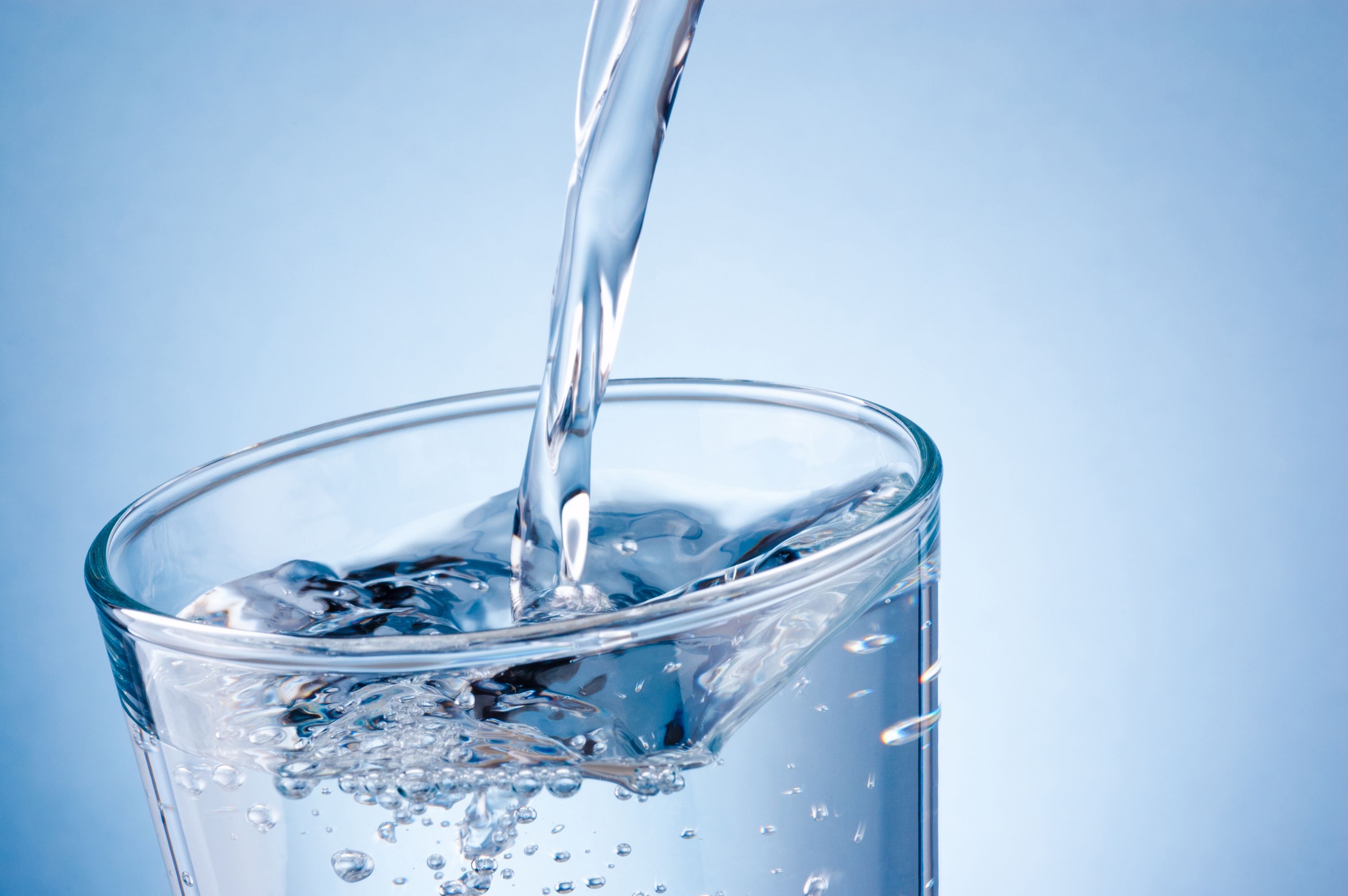Artificial Intelligence’s Impact on Water Quality Maintenance
Scientists from Ciudad Universitaria in Sinaloa in Mexico, the National University of Mar del Plata in Mar del Plata, Argentina, the National Research Council in Mar del Plata, and the University of Granada in Granada in Spain recently published an article in TrAC Trends in Analytical Chemistry, about the impact artificial intelligence (AI) and machine learning (ML) algorithms have on measuring different types of water quality, and how the technology could be evolved further (1).
Pouring water into glass on blue background | Image Credit: © Hyrma - stock.adobe.com

The use of generative AI technologies has grown significantly over the last few years. ML algorithms especially are becoming more useful for various applications. AI is revolutionizing research fields like molecular biology and disease diagnosis, and it has been applied in many different areas of knowledge, such as analytical chemistry, medicine and biology, food and agriculture, arts, psychology, water quality control, and more. AI technologies, specifically ML, have improved the analysis and interpretation of data assessment; these advancements have greatly improved scientists’ ability to extract valuable insights, identify patterns, and make precise predictions through different algorithms, which are the fundamental activities of chemometrics and analytical chemistry.
In this study, the scientists highlight how ML has been used in water quality control analyses alongside different spectroscopic techniques (1). These technologies have helped in efficiently processing spectral data from various sources, identifying contaminants, and supporting early detection systems. However, they do have limitations, such as needing large and diverse datasets for optimal performance, which limited the models’ predictive powers whenever certain studies used small datasets.
Analytical science plays an important role in ensuring that water is free from harmful contaminants, heavy metals, pesticides, pharmaceuticals, or microorganisms. Some contaminants, like lead, arsenic, and disinfection byproducts, have been associated with chronic health effects like developmental delays, cardiovascular disease, and certain types of cancer. As such, it is important to minimize exposure to these substances by consistently maintaining high-quality drinking water.
Surface water and wastewater must also be considered in conversations of maintaining water quality. Surface water has use in maintaining healthy aquatic life and providing for agricultural and industrial uses, but when contaminated by things like sewage leaks and waste products from farms, it can carry many pathogens and waterborne diseases. Wastewater, which is used water from agricultural and livestock activities, can pose issues when it is disposed into rivers, seas, or sewerage without proper treatment, which can lead to pollution and potential threats to the health of people and ecosystems.
Open databases can aid in expanding AI applications in water quality control and treatment, the scientists wrote, though AI must be studied further in these fields. The combination of AI and spectroscopic techniques has the potential to reduce costs, promote environmentally sustainable water treatment, and enhance overall water and environmental quality. Furthermore, the scientists believe it is important to push for legislative changes and collaboration between organizations to harness the synergy between these technologies and vital water resources to maintain public health.
“These new tools represent a revolution, not only because of their potential to work with huge amounts of data, but also in terms of their wide range of applications, from prediction of results to modelling and optimization of variables, among many others, as discussed along this review paper,” the scientists wrote in the study (1).
Reference
(1) Pérez-Beltrán, C. H.; Robles, A. D.; Rodriguez, N. A.; Ortega-Gavilán, F.; Jiménez-Carvelo, A. M. Artificial Intelligence and Water Quality: From Drinking Water to Wastewater. TrAC – Trends Analyt. Chem. 2024, 172, 117597. DOI: https://doi.org/10.1016/j.trac.2024.117597
Newsletter
Get essential updates on the latest spectroscopy technologies, regulatory standards, and best practices—subscribe today to Spectroscopy.
AI-Powered Fusion Model Improves Detection of Microplastics in the Atmosphere
July 17th 2025Researchers from Nanjing University of Information Science & Technology have introduced a breakthrough AI-enhanced multimodal strategy for real-time detection of polyamide microplastics contaminated with heavy metals.
High-Speed Immune Cell Identification Using New Advanced Raman BCARS Spectroscopy Technique
July 16th 2025Irish researchers have developed a lightning-fast, label-free spectroscopic imaging method capable of classifying immune cells in just 5 milliseconds. Their work with broadband coherent anti-Stokes Raman scattering (BCARS) pushes the boundaries of cellular analysis, potentially transforming diagnostics and flow cytometry.
AI-Powered Raman with CARS Offers Laser Imaging for Rapid Cervical Cancer Diagnosis
July 15th 2025Chinese researchers have developed a cutting-edge cervical cancer diagnostic model that combines spontaneous Raman spectroscopy, CARS imaging, and artificial intelligence to achieve 100% accuracy in distinguishing healthy and cancerous tissue.
Integrating Spectroscopy with Machine Learning to Differentiate Seed Varieties
July 15th 2025Researchers at the University of Belgrade have demonstrated that combining Raman and FT-IR spectroscopy with machine learning algorithms offers a highly accurate, non-destructive method for identifying seed varieties in lettuce, paprika, and tomato.